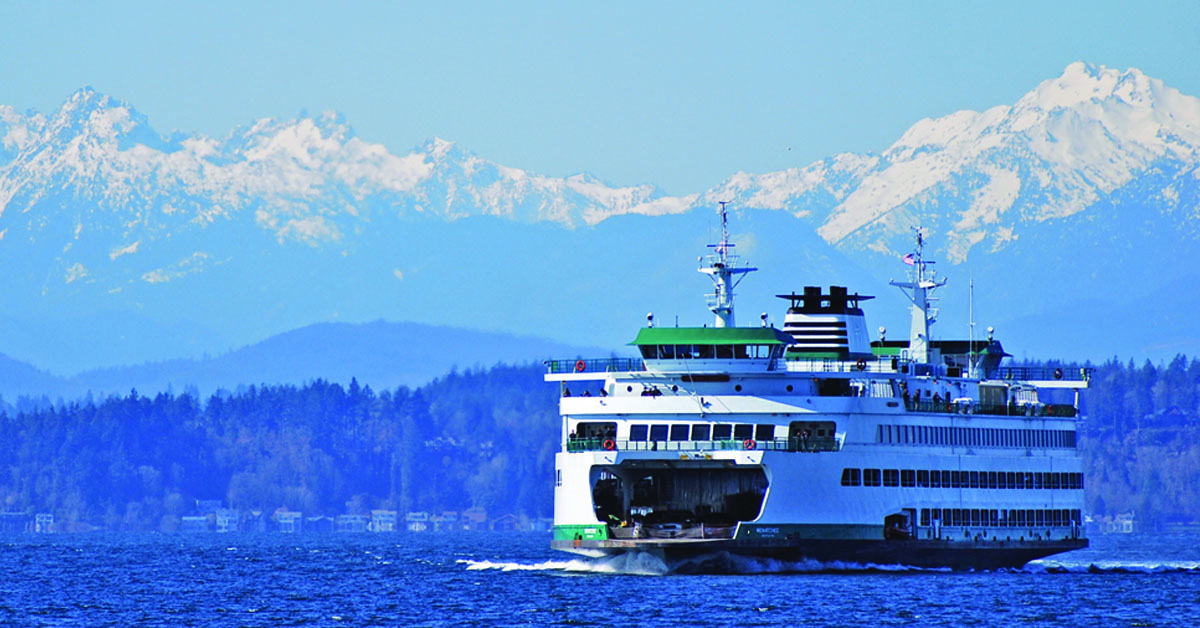Humans began to cross Beringia — the land bridge that once connected Asia and North America — about 20,000 years ago. They slowly migrated south and were permanently settled in coastal areas of modern-day Canada and the U.S. by 3,000 B.C. It took a few more millennia, however, for the first settlers to reach the Hawaiian Islands. These people were Polynesians who used primitive canoes to brave journeys of thousands of miles across the Pacific Ocean.
Today, the Pacific Region states of Alaska, Hawaii, Oregon and Washington are much more closely connected by air travel. Seattle has the eighth-busiest airport in the U.S., handling 25 million passengers in 2019, according to the U.S. Department of Transportation. The international airports in Anchorage, Honolulu and Portland each rank among the country’s top 60 airports in terms of traffic with a combined 22 million outbound passengers that year.
Portland underwent “transformational” growth during the previous decade, according to the Oregon Office of Economic Analysis, but the state’s largest city has struggled to recover from the depths of the COVID-19 pandemic. During the latter half of 2021, the agency noted that Portland was Oregon’s lowest-performing regional economy. The rise in remote work and a lack of business travel were hampering retail stores, restaurants and hotels.

On the whole, however, Oregon’s economy is doing well as state officials recently estimated the collection of an extra $1.5 billion in tax revenues during the current budget cycle. Although household and business income was on the rise, state economists warned that inflation was eating up much of these gains. They projected that home prices and rents would continue to rise quickly, which could deter new residents from moving to Oregon or cause current residents to leave.
Seattle’s status as a commercial real estate investment hub continues to grow. CBRE data from this past January showed that among the 12 largest U.S. office markets, Seattle was one of two that saw leasing activities rise on a monthly basis. At that time, office-leasing activities across the metro area were 34% higher than pre-pandemic levels. And Seattle’s industrial real estate market broke a 15-year-old absorption record in 2021 as tenants filled a net space increase of 13 million square feet, according to commercial real estate services company Kidder Mathews.
Tourism-dependent Hawaii recovered well last year to the tune of 6% annual gross domestic product (GDP) growth in Q3 2021, a figure that led the nation. This past March, state officials projected GDP growth of 3.2% for 2022. The 6.8 million visitors to the Aloha State last year represented 65% of pre-pandemic levels. This number rose to 79% in February 2022.
Alaska’s recovery, meanwhile, has been muted. In 2021, the state recovered about one quarter of the 27,600 jobs lost during the previous year. Officials estimate faster job growth in 2022, but the construction, health care and federal government sectors are the only ones expected to end this year at or above pre-pandemic levels. ●

As of fourth-quarter 2021, the state of Hawaii had roughly 12.8 million square feet of shopping-center space, which doesn’t include some types of properties (such as malls and outlet centers) and is a much smaller amount than many other U.S. markets analyzed by Cushman & Wakefield. Still, the retail sector has a sizable impact on the Aloha State’s economy.
According to the National Retail Federation, 165,000 jobs in Hawaii are directly tied to the retail industry while another 72,000 jobs are supported by retail. About 21,600 retail businesses contribute $9.3 billion annually to the state’s economy.
Statewide asking rents for retail space rose by 1.6% year over year to reach $45.35 per square foot in Q4 2021, more than double the U.S. average of $21.71. During the same period, the vacancy rate dropped by 120 basis points to 6.2%, slightly below the U.S. average of 6.5%, Cushman & Wakefield reported.
At the end of 2021, the National Association of Realtors reported weak demand among investors for Honolulu retail properties. About $109 million in deal volume occurred in Q4 2020, but this figure dropped to $33 million one year later.
Focus: Defense industry
Across the Pacific Region, some 228,000 people were employed in active-duty, reserve or civilian-based military jobs as of September 2021, according to the Defense Manpower Data Center. Washington led the way with 112,000 such jobs and Hawaii had 71,000.
Private-sector jobs in the aerospace and defense industry play a key role in Washington, where 260,000 people were employed and about $137 billion in revenues were generated in 2019. Meanwhile, Hawaii and Alaska ranked second and fifth, respectively, in terms of defense spending as a share of their overall economies. Defense spending was responsible for 7.7% of GDP in Hawaii and for 6.4% of GDP in Alaska.
The Army, Navy, Air Force, Marines and Coast Guard each have a notable presence on the Hawaiian island of Oahu. The U.S. military has been in Alaska since 1867, and a key moment occurred in 2010 when Army and Air Force units in Anchorage merged into a single installation, Joint Base Elmendorf-Richardson.
What the locals say
“I like Portland. I could live in a number of markets and I could do more business in bigger markets, but I really like this place. And I’m actually seeing things like restaurants and retail stores, some of them taking the time during COVID to kind of reimagine, reinvent, remodel. We’re seeing restaurants coming back. We’re seeing retail stores coming back. We’re seeing some new hotel development. That’s very positive, but we’re also seeing a lot of adaptive reuse. We’re also seeing some motels turning into low-income housing and we’re seeing big-box stores turning into self storage.”

Bradley Lawrence
Principal
Bradley Lawrence Private Capital
3 Cities to Watch
Bellevue
This city of 151,000 residents sits just east of Seattle along the shores of Lake Washington. It is the fifth-largest city in Washington and grew by 24% from 2010 to 2020. Bellevue’s major employers include Boeing, Expedia, Microsoft, T-Mobile and Verizon. A new light-rail extension line is expected to open in 2023, providing more commuter options to downtown Seattle, the University of Washington and Seattle-Tacoma International Airport.
Eugene
The third-largest city in Oregon added 20,000 residents during the past decade and now has a population of 176,600. Federal, state and local governments employ 6,900 people within Lane County while PeaceHealth employs another 5,300. Eugene has been sprucing up its downtown recently with a variety of planned or completed projects, including the expansion of the 5th Street Public Market and 82 new rooms at The Gordon Hotel.
Juneau
At 3,255 square miles, Juneau is the largest U.S. capital city by land mass. A survey conducted last year by economic development group Southeast Conference found that 75% of company executives in the region had a negative view of the overall business climate. Good news arrived in July 2021 as passenger cruise ships returned after a 21-month hiatus due to COVID-19. The 2022 cruise season could break records with estimates of up to 1.5 million passengers.
Sources: Aerospace Industries Association, Alaska Department of Labor and Workforce Development, Anchorage Daily News, CBRE, Cushman & Wakefield, Defense Manpower Data Center, Eugene Area Chamber of Commerce, Kidder Mathews, Live Science, Military.com, MyBaseGuide.com, National Association of Realtors, National Defense Industrial Association, National Geographic, National Retail Federation, Oregon Capital Chronicle, Oregon Office of Economic Analysis, Smithsonian Magazine, Sound Transit, Southeast Conference, State of Hawaii, Travel Juneau, Travel Lane County, U.S. Department of Transportation, Visit Bellevue, World Population Review








